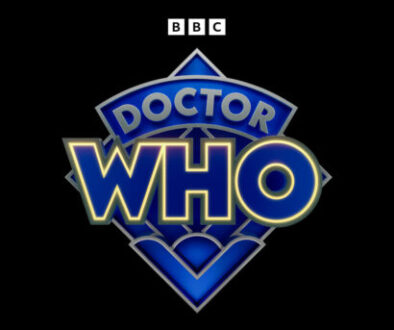A Big Hand For The Doctor Review
Patrick Kavanagh-Sproull gives his verdict on first 50th anniversary short story.

Doctor Who has truly hit a newfangled and modern era in its reigning fifty years. Anniversary ferment has settled and BBC Worldwide are having a metaphorical ball with products such as coins, toys and even stamps being churned out as part of the publicity campaign to raise awareness of the show. One of the most recent announcements is that eleven eBooks are to be produced, coined ‘eShorts’. Whilst the latter term hasn’t exactly sunk in, the former is now a well-known phrase amongst the literary community with Amazon Kindles and Kobo e-readers rising steadily. Now the BBC have used this growth in popularity to their own advantage and have commissioned eleven children’s writers to compose… eleven books. And this is where I arrive. For the next eleven months I will be reviewing these new worlds of our beloved Doctors and hopefully find some classics. So I start here with Eoin Colfer’s A Big Hand For The Doctor.
The author
In contrast to other younger readers, I never once was enticed by Colfer’s flagship series on Artemis Fowl. His writing was rather dull and inept whilst the story just had no charm. However his novel, Half Moon Investigations drew me and I even dabbled in snooping as a young boy (the consequences were… not in my favour). Before I sat down to read A Big Hand For The Doctor, I held my breath for I was unsure whether Colfer would lapse into the style of his Artemis Fowl series or if he would retain some of that Half Moon greatness.
Here is what Colfer had to say on A Big Hand For The Doctor:
The Doctor
Whenever a Whovian mentions the First Doctor to somebody unfamiliar with the monochrome past of the show, they think of a grumpy old man in rubbish black-and-white episodes. Yes, the grey-scaled tone does not add anything to the stories other than a cosy retro feel, but the first-mentioned statement is grossly wrong. The First Doctor was cranky, irascible but generally a caring old gentleman. His love for his granddaughter Susan prevailed over everything else in the universe and he held her dearly. This paternal tie gave the First Doctor a more down-to-earth feeling and ergo he remains one of the most famous, curmudgeonly and fun Doctors of all time.
Opinion
Eoin Colfer has designed his own Doctor in this paroxysm of adventure, and strays further off continuity than I have ever seen a writer do for the show. He paints us a picture of a whimsical and less cantankerous Doctor, giving us occasional bouts of the hard crotchetiness before reverting to a more waggish tone. This Colfer Doctor makes references to Blake’s 7 (clearly a pet hate of the writer), fake tan and Harry Potter, almost losing the feel of William Hartnell’s portrayal amongst all these pop culture references. It is annoying to start with, and dedicated Whovians such as myself start boiling with anger as the author decides to take a detour off the set path. However by the end of the eShort you understand the way Colfer takes, but he still deviates and that in itself is enough to kill a Whovian’s feelings.
This strange new-generational Doctor is in Victorian London, hot on the pursuit of the villainous Soul Pirates. Do not be put off by their unimaginative name these ‘pirates’ are ingenious creations: putrid beings that have foul patchwork-like appearances and seek only to harvest the bodies of young children leaving nothing left, hence the title. I was engrossed by the concept but the execution was damp, with every encountered Soul Pirate a thick, vacuous thug that only wanted to seek death on all. After a particularly gruesome fight with one pirate, the Doctor is left handless and seeks a replacement (a biological swerve from traditional continuity).
Susan, the Doctor’s original companion and true love of his life assists him in this adventure but provides little more than a plot convenience. As I mentioned earlier, the Doctor is devoted to the young girl and feelings are exchanged but this Colfer Susan is a clingy and irksome Time Lady that spouts “Grandfather!” at the beginning and end of every sentence. My Defining the Doctor: The Aztecs article told of how I have a mild dislike for Susan’s naïvety and Colfer merely emphasises this point.
One of the most infuriating traits added to the Colfer Doctor is a bizarre scene in which the Doctor envisions his future self, the Eleventh Doctor, and muses on how he wishes to be as agile and fit as the “the tall one with the dicky bow”. I was maddening at this point and Eoin Colfer was vexing me so.
The Colfer Doctor is another thing the Hartnell Doctor isn’t: nimble. The original incarnation was an ageing but wise old man that provided the scientific expertise and banter whilst his companion Ian was the muscleman that did physical tasks. Eoin Colfer turned this around and now the First Doctor is capable of smashing through doors, running up stairs, diving off buildings (!) and giving decent combat in a fight. He also decides to look into the Doctor’s past and even details a scene of the infant Doctor being cradled by his mother (double ‘!’).
To conclude this rather scathing review, Eoin Colfer delivers a rather fun if irrelevant, and different adventure that is sorted neatly in a convenience filled resolution. His Doctor is extremely different from William Hartnell’s marvellous portrayal but you get used to Colfer’s version after a while. The deviations do unfortunately get in the road (at times. Particularly if you’re a diehard Whovian) and Colfer clearly hasn’t done enough research on the First Doctor’s characterisation.
Not the best start to the series and I hope for a more serious story that justifies the Doctor nicely.
Final Verdict: 7/10








